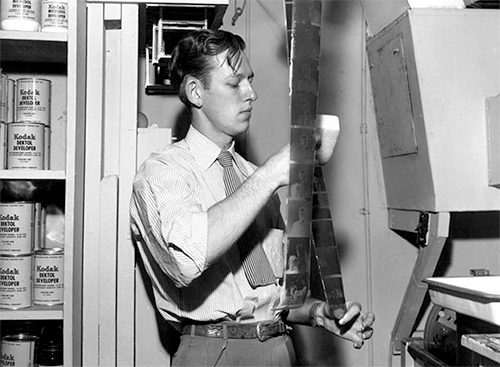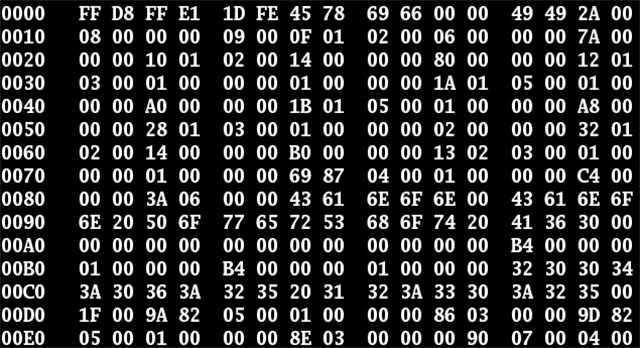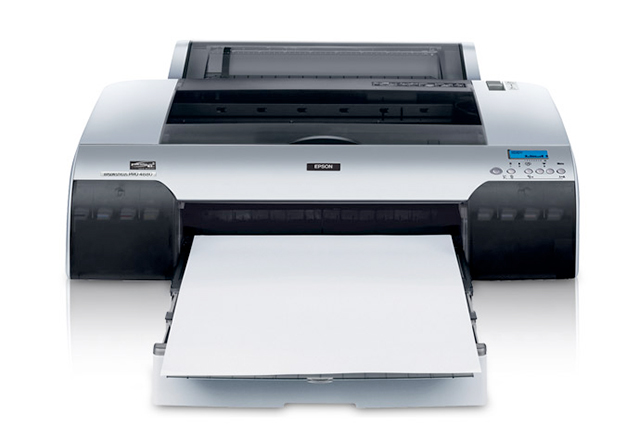Digital photography has made photography easier, there's no doubt about it. Digital photographs are millions of different numbers in two-dimensional binary representing millions of pieces of data that make up one single digital image. These numbers represent pixels which translate into exact colors, shapes, objects, and exact dimensions of any image that processes through a computing device.
Digital has changed how photography and images are used and shared around the world. Digital photos can travel to every corner of the earth, giving viewers the ability to enjoy them at their convenience without being constrained to a photo book, journal, or magazine. But as they seem to just vanish into thin air, there's a this precarious feeling that they only survive in a vacuum.
Will the impermanence of digital photography be a future problem for us? What happens if we lose all of our photos? How do we ensure they live beyond us?
I have always wondered what would happen if I lost all my photos, but then it actually happened. My home was robbed a few years ago, and all my camera equipment and computers, hard drives with all my backed up pictures were stolen. A trove of treasured photos from my Japan trip, Puerto Rico and my Grandmother all gone, without a trace.
And because I hadn't backed up my photos on more than a few flash USB drives and external hard drives, I lost the lion's share of my photographs. If I had been proactive about by printing them out, or saving in my Gmail account or to the cloud, I would still be enjoying these moments. Now they are just a memories slowly fading away without any tangibility. The life of a photograph, whether for personal enjoyment or a masterpieces of art, is a huge concern in our digital world.
BUILT TO SPILL
Computers are degenerative pieces of hardware that slowly degrade and fail after a few years. Unfortunately, the computer, tablet, or smartphone, are the places where our digital lives and most of our photographs live.
So how do we make sure our photos last over time?
There is always a worst case scenario or the potential to lose a photo. Having the negative was always a standard safeguard and keep your photos safe, whether you kept it in a fireproof lock box or a bank vault.
Digital images now exist as just vaporware on the internet, traveling from network to network, data center to data center, file-sharing and photo-sharing websites. They exist on computers, they exist on the internet, on your tablet and your iPhone, but where can we save them so they aren't lost on a dying computer or hard drive?
OPTIONS, OPTIONS, OPTIONS
The best back-up plan is to have a back-up plan in the first place. You should always prepare for failure of one of your back-up methods, and it's important to choose a different array of back-up options to make sure you have it 'lock boxed' in more than one location.
Save them on hard drive with great metadata and keyword tags so they are easily searchable, and put them on thumb drives. Another place is in the cloud. One of the best, and free up to 15GB is Google Drive, and Dropbox with 2GB of free space. You can purchase more space as needed, and with the size of photos today you'll probably need to buy more.
If you still have an optical drive on your computer, burn them on to archivable CD or DVD media, and bear in mind that these too will degrade over time. Another good idea is to back them up on sites like Flickr, 500px, Zenfolio, and other imaging-sharing webpages.
One of the best ways is to make a high-quality photographic print on a dedicated photo printer, something from Epson, Canon or HP will serve you best. This way you have an actual tangible piece that you can later scan back into digital form if you lose the digital file. The higher the quality of the print, the more image information/dynamic range of the photograph can be scanned back into a computer.
And why not try shooting film? Nothing makes you spare your shots when you have a roll of 35mm shots that give you 24 or 36 frames. Film photography is one of the most rewarding for a photographer that has never used anything but a digital camera. You'll get a negative for back up, you can print them yourself, and even scan them into a digital image.
OUTLIVE, OUTCAST... YOU
There is no way for sure to know if these methods will be antiquated 2, 5, or even 100 years from now, but it's a good start at least. Make sure you have a back up plan, or you'll end up like me.
Being ahead of the curve with your photography is important for the professional photographer. It is the lifeblood of your business, and your most precious commodity. The impermanence of film may be a reality today, but we can start to safeguard our work by being ready for a curveball.
And even today, I think there is even more concern today to keep your digital images safe. With congress trying to pass laws that will ban Net neutrality, it may get even harder to save your photos online, making back-up processes even more costly.
Net neutrality means that Internet Service Providers and Governments have to keep the net neutral and open, or more easily explained, they won't be able to make companies pay more to use an Internet Fast Lane. For example, if net neutrality was taken away, companies would have to pay Internet Service Providers more to have their content stream faster to consumers.
So for instance Netflix would have to pay a larger sum to different ISPs to get priority of the Internet Fast Lane which would most likely be a cost passed on to us. Not only that, but it has the potential for ISPs to black out certain websites we might try to access if the company hasn't paid to play. The internet as we know it today will be only a shred of the past if we don't try to protect it now.
Imagine a closed internet that makes you pay more if you want to visit a certain site, instead of having an open internet where all things are equally fast and not blacked out. This regulation can harm many things for professional photographers, such as blocked photo-sharing sites, your website may not be accessible to a large portion of the world, and less access to the pages you want to visit/make you pay more to visit them. It is a looming existential threat that all consumers now face if net neutrality is taken away. To learn more about the issue, visit savetheinternet.com/net-neutrality.
So being in front of what's possible like the possible end of net neutrality is always the best practice for any endeavor, whether you're a professional photographer or a photo editor. Although backing up photos and making sure you have 'fail-safe' methods can be tedious, you'll appreciate it in the long run.



